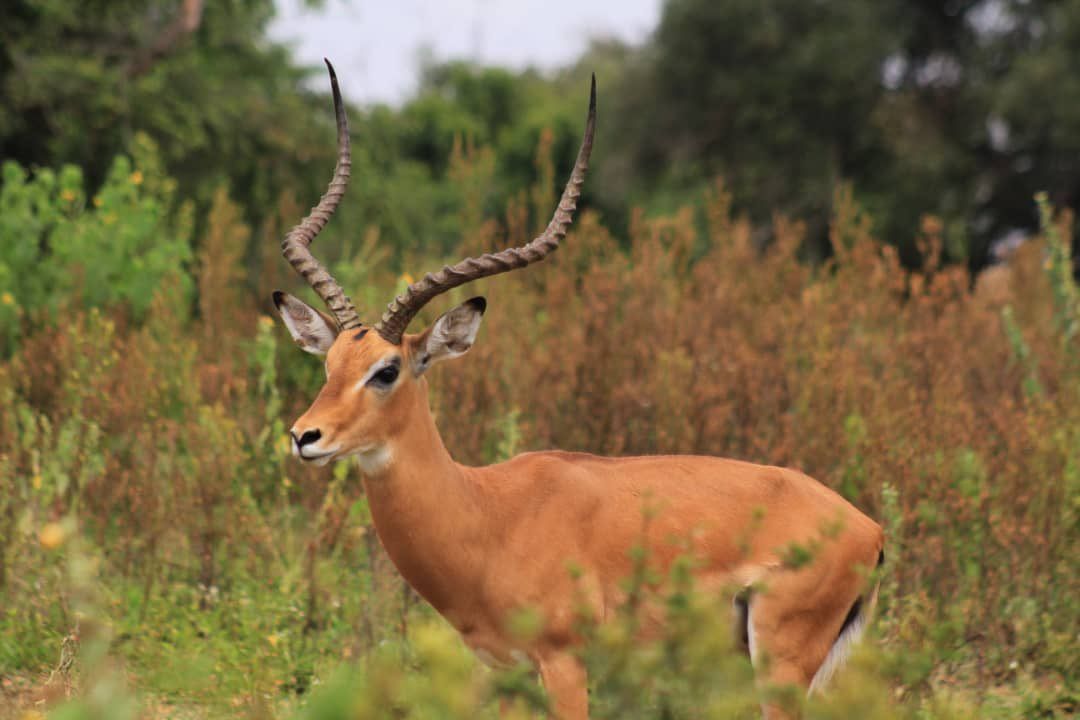 The Ugandan kob (Kobus kob thomasi), male,Queen Elizabeth NP, Uganda, 2016.
The Ugandan kob (Kobus kob thomasi), male,Queen Elizabeth NP, Uganda, 2016.
The Ugandan kob is a subspecies of the kob, a type of antelope. Only the males have horns, which are lyre-shaped, strongly ridged and divergent.
Males are slightly larger than females, being 90 to 100 cm (3.0 to 3.3 ft) at the shoulder, with an average weight of 94 kg (207 lb), while females are 82 to 92 cm (2.7 to 3.0 ft) at the shoulder and on average weigh about 63 kg (139 lb). Apart from the throat patch, muzzle, eye-ring and inner ear, which are white, the coat is golden to reddish-brown, the color differentiating it from other kob subspecies. The belly and inside of the legs are white, and the front of the forelegs are black.
It is typically found in open or wooded savanna, within a reasonable distance of water, and it also occurs in grasslands near rivers and lakes.
Ugandan kobs are herbivores and feed largely on grasses and reeds.
The females and young males form loose groups of varying size which range according to food availability, often moving along watercourses and grazing in valley bottoms. Sometimes non-breeding males form their own groups. Ugandan kobs usually have a lek mating system, in which males defend small territories clustered on traditional mating grounds. Females visit these leks only to breed, and males provide no parental care. Each lek is associated with a female herd of about 100 individuals. Females begin to mate at the age of one, but males must normally wait for several more years. A single calf is born in November or December, after a gestation period of about nine months.
Ugandan kob appears on the coat of arms of Uganda. #Godfreytheguide #Uganda #Animals #Antelope.
www.interiorsafarisea.com
Comments
0